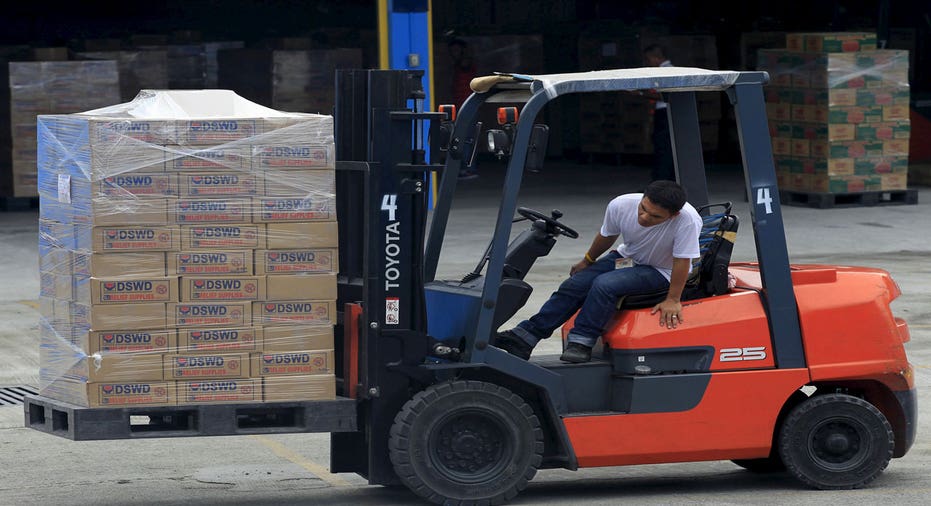An Airbnb Model for Industrial Storage

One of the biggest bottlenecks to commerce anywhere is storage. Having the warehouse space you need, when you need it, and as close to your customers as possible, is key for any trader, supplier or manufacturer who hopes to keep those customers happy.
For many businesses, owning a warehouse can mean thousands of square feet of space can lie empty at various times of the year, keeping fixed costs high, even as the need to store goods may dip during, say, a summer sales lull.
That's where technology executive Karl Siebrecht saw an opportunity to market unused warehouse space to small and mid-sized companies in need of short-term storage. With two software engineers as partners, Siebrecht built Flexe, an online marketplace for temporarily unused chunks of warehouse storage.
Siebrecht compares what Flexe does with the way Amazon's (NASDAQ:AMZN) cloud services offers computing and hosting capabilities. "Before Amazon created that category, everyone had to create their own data center, buy racks and servers, and hire employees to take care of those servers; it was a fixed component of your P&L," said Siebrecht.
Now, much as companies just pay Amazon for the computer services they need, Flexe does the same with warehouse space. For warehouse owners, it's the AirBnB of industrial storage. Unused rooms, or just floor space for pallets, can be rented out when it's available at whatever price the market will bear.
While warehouse capacity is fixed, inventory levels usually vary. In a survey carried out by Flexe, out of 158 respondents, more than three quarters reported their inventory fluctuated significantly throughout the year, and 48 percent of respondents said some of the variation was unexpected, leaving them either searching for extra space, or paying to run an empty warehouse. "It allows us to expand and shrink our storage capacity dynamically in response to our customer needs, our seasonality (we peak in the holidays) and overall company growth," says Dhruv Agarwal, CEO of True Fabrications, a wine and bar accessories provider that sells to over 10,000 stores across the U.S. "Warehouse leases are long term and not flexible, so Flexe gives us that ability."
Agarwal said by email that Flexe's prices are 30 to 40 percent below what's charged by traditional third-party logistics providers, known as 3PL's in the trade. And building his own warehouse would have left it filled only 50 to 70 percent of the time. That's what makes it equally attractive to warehouse owners, says Siebrecht. "If you have excess capacity, then it's almost pure margin: you're already paying for your mortgage and your fork truck and your labor - you can leverage all your fixed costs more productively."
Flexe was founded by two software engineers, and the key to its success is the speed and simplicity of its software, and the data it can capture to help warehouse managers know when they'll likely have space available.
"You've got make it easy for all parties in the marketplace to transact business," says Siebrecht. Flexe does that with a web-based platform that serves as an online marketplace, finding space to fit a customer's needs from 200 warehouses across most major U.S. markets, and taking a piece of each transaction.
Some of its customers can be large corporations that already have their own warehouses but are launching a new product in a particular market, or servicing construction equipment on a temporary job and need space in an unfamiliar place for a fixed period of time. "Do you build a church for Easter Sunday or for the congregation at your average weekly service," asks Siebrecht.
The software also lets subscribers track their inventory in the warehouses where they have temporary space, tracking if pallets have been received or shipped, even how high the pallets are stacked.
With the U.S. increasingly reliant on the small batch manufacturing and just-in-time delivery that come as manufacturers use big data and web-based ordering and forecasting systems to avoid piling up expensive, capital-intensive inventories, Siebrecht thinks he is on to a technology that could change the game for warehousing, making more flexible space available to more companies more of the time.
"There are tens of thousands of warehouses in North America," says Siebrecht. "We think that there's a short-term market that could be as big as 25% of the total warehousing market in the U.S."